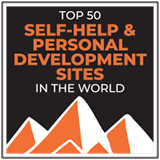Companies must develop a working environment that is conducive to open, trusting, caring relationships between people—an environment that welcomes new ideas and encourages constructive feedback; one in which management actively serves as a catalyst for nurturing and then disseminating new ideas. One of the functions of management is to recognize communication barriers so that the organization can avoid them. Discussed below are some of the most significant communication barriers to avoid.
Communication barrier: Rigid adherence to organizational charts. Organization charts in a company neither define relationships as they actually exist nor direct the lines of communication. If the organization doesn’t reside in the minds and hearts of the people, it doesn’t exist. No chart can fix that. An organization’s function is simple: to provide a framework, a format, a context in which people can effectively use resources to accomplish their goals. The problem is that organizational charts imply that communication should only flow vertically. The fact is communication must flow across organizational and functional units as well.
Communication barrier: Management isolation. Management should keep in mind that creating lavish executive offices, having administrative assistants construct what amounts to barbed-wire enclosures around those executive offices, establishing perquisites—the corner office, executive parking spaces, separate executive floors, private washrooms and dining rooms, limos, even flying first class when others sit in coach—loudly proclaim who is boss. These “perks” increase personal distance and ensure that people feel that their leaders are unapproachable.
Communication barrier: The development of caste systems. The caste system creates artificial barriers that inhibit communication. For example, does your organization encourage clear language or is jargon the norm? Are there opportunities for people at different levels and in different functional groups to spend time with one another, or is there socializing only along status lines?
Communication barrier: The existence of physical barriers. Distance poses another kind of problem in the workplace. People communicate most with those physically closest to them. Thomas Allen of MIT notes that “beyond a distance of 25 or 30 yards, personal interaction drops off markedly. That is why it is important for management to try to bring together as much as possible those who work together.”
Communication barrier: The ambiance surrounding meetings. The process of setting up a meeting and the nonverbal cues during a meeting often communicate as much as the content of the meeting itself. For example, how often are meetings held? Are people early or late for meetings? Is the boss late? What’s the layout of the room? Who gets invited? What’s on the agenda? How is the agenda prepared? How long does the average meeting last? How much time is allotted to each subject? Is the tone of the meeting formal or informal? How much dialogue is there?
Communication barrier: Consistency of words and actions. Are the actions of your organization consistent with its policies? Does management say they care about innovation, but promote those who don’t rock the boat? Do they say that they reward excellence, but give across-the-board raises? Do they say they reward creativity, but have a long-drawn-out approval process that frustrates anyone with a new idea?
Communication barrier: Political warfare. Some people hoard information for personal gain. They believe they increase their power when others are in the dark. Organizations must combat the idea that playing politics with information will bring personal gain. Organizations marked by politics, turf battles, and staff infighting lack adequate communication.
Communication barrier: Poor listening habits. When report cards are given out for how well we listen, very few of us would receive passing grades. Barriers to listening include assuming a subject is uninteresting and tuning out, focusing on the delivery rather than the content, reacting too quickly before the message is completed, picking up on emotional words and not hearing the rest of the message, listening only for facts rather than trying to absorb ideas, allowing yourself to be distracted, and avoiding listening to subjects that you don’t understand. Everyone must learn to overcome these barriers.
The bottom line is that there are four elements required to make communication thrive. First, every organization requires accessible, affordable, easy-to-use technology. Second, an open, honest work environment should be embraced. Third, people should be encouraged to break down the communication barriers that exist. Last, great leaders must communicate the guiding principles, beliefs, and values of the organization—this will rally everyone to a common cause. For just as the stars were used to navigate ships in the night, these guiding principles dictate what is important, how decisions are made, how people are rewarded, who gets promoted, what kind of person joins the organization, and how people communicate with one another.
Additional Reading:
9 Barriers to Effective Communication
Meaningful Conversations Don’t Happen By Chance
May I Have a Word with You?
How to Make Your Words Meaningful
Are You Talking to Yourself?
Attention Leaders: We Need to Talk
Leadership: Creating a Vision
If you like this article, subscribe to our blog so that you don’t miss a single post. Get future posts by RSS feed, email or Facebook. It’s FREE. Click your favorite option (top right).




This is a great message – I would not have thought of some as barriers to communication, but truly they are. The concept of “leadership elite” is present in many of your barriers, and is really a core problem, if leadership sees themselves as above. If that barrier is in place, it’s difficult to remove any others.
Hi Carol
When we think about communication barriers we often think about person to person issues rather than “structural” areas (i.e., leadership elite) within a business. The purpose of this post is to highlight some of those areas. Thanks for your comment.
Have an awesome day!
Best,
Frank
There is so much wisdom packed in this article.
Much to think about…much to implement.
You are so right when you say….
Companies must develop a working environment that is conducive to open, trusting, caring relationships between people—an environment that welcomes new ideas and encourages constructive feedback; one in which management actively serves as a catalyst for nurturing and then disseminating new ideas. One of the functions of management is to recognize communication barriers so that the organization can avoid them. < AMEN!
What speaks to me personally is the last paragraph..
The bottom line is that there are four elements required to make communication thrive……. For just as the stars were used to navigate ships in the night, these guiding principles dictate what is important, how decisions are made, how people are rewarded, who gets promoted, what kind of person joins the organization, and how people communicate with one another. < POETICALLY INSIGHTFUL
There is much that you say…. that is so important- Your wisdom MUST BE SHARED.
Thanks Frank!
Lolly
Lead From Within
Hi Lolly
Thanks, as always, for your encouragement and support. I Truly appreciate it.
Best,
Frank
Thanks for sharing this, Frank. Communication barrier is largely seen in meetings held with key players from different parts of the world. You were right to point out that companies should embrace technology to break communication barriers during team meetings. As a data visualization provider, we aim to provide map visuals that can be readily shared real time in team meetings. In this way, insights can get in half the time.
Hi Margaux
Technology can play a very important role in the communication process. I’m sure your technology supports and enhances the discussion. Thanks for sharing.
Best,
Frank
Thank you so much. This is very important to note as long as the barriers are identified. It is of much help to those who live things but don’t know how to interpret them.
Thanks Frank
Hi Ndayi
The first step in overcoming a communication barrier is knowing that they exist. I hope this post shows you how to identify them in your organization.
Have a great day
Best,
Frank
H Frank,
This is a really great article and I have found it helpful. However I would love some information on ways in which technology can become a barrier to communication in the work place and how this can be addressed. For example outdated equipment can be a technological barrier etc but I’m having difficulty going beyond that . I would love your assistance on this. Thank you.
Again keep up the good work you have been doing.
regards,
Sol
Thanks for the feedback Sol. You make a great point. While I haven’t covered your subject directly, there are two posts that may interest you. “Call Me Maybe” discusses the advantages/disadvantages of texting, email, social media etc, and “May I Have a Word With You” discusses the impact that words have on your relationships as well as your reputation. I’ll give your topic some thought. (Stay tuned) Here are the links for your convenience:
https://www.franksonnenbergonline.com/blog/call-me-maybe/
https://www.franksonnenbergonline.com/blog/may-i-have-a-word-with-you/
Have an awesome weekend!
Frank
This is a great article, Frank. I look forward to reading more of your blogs.
Thanks Heather. I’m glad you like it. Come back soon 🙂
Have an awesome week!
Best,
Frank
It’s an intelligent article which introduces us with communication barriers so that we can easily avoid them.
You’re right, Asiful. Now that you know some of the communication barriers, it’s critical to avoid them.
Have a wonderful weekend!
Frank
It is interesting article frank i learn more about comminucation barriers..from your issue
Hi Senait
I’m glad this piece was helpful to you. I hope to see you back again soon.
Best,
Frank
As always a valuable insight and worth the read.
Thank you Alec. I’m glad you like it.
Thanks for taking the time to write.
Best,
Frank